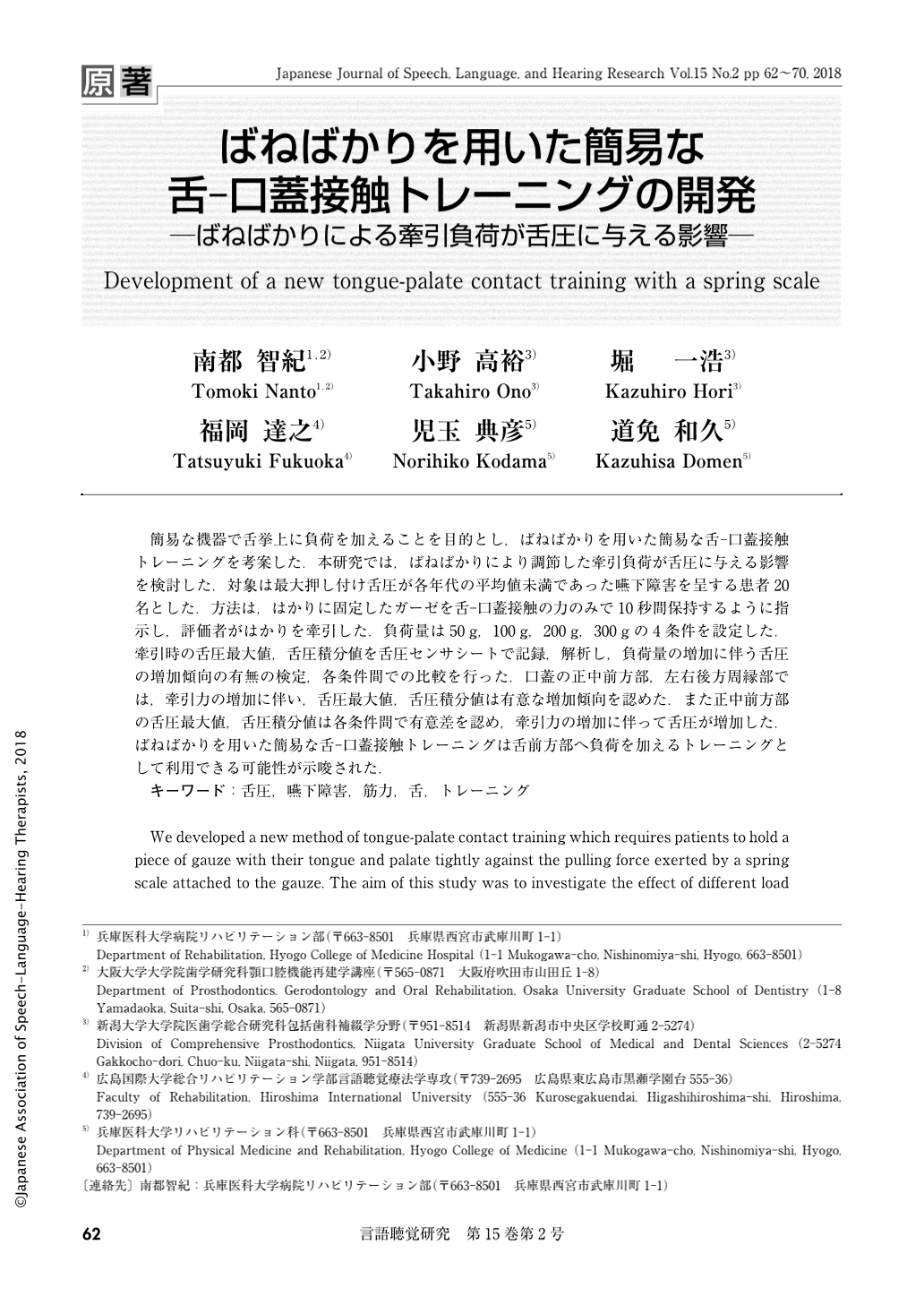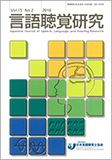Japanese
English
- 有料閲覧
- Abstract 文献概要
- 1ページ目 Look Inside
- 参考文献 Reference
- サイト内被引用 Cited by
簡易な機器で舌挙上に負荷を加えることを目的とし,ばねばかりを用いた簡易な舌-口蓋接触トレーニングを考案した.本研究では,ばねばかりにより調節した牽引負荷が舌圧に与える影響を検討した.対象は最大押し付け舌圧が各年代の平均値未満であった嚥下障害を呈する患者20名とした.方法は,はかりに固定したガーゼを舌-口蓋接触の力のみで10秒間保持するように指示し,評価者がはかりを牽引した.負荷量は50g,100g,200g,300gの4条件を設定した.牽引時の舌圧最大値,舌圧積分値を舌圧センサシートで記録,解析し,負荷量の増加に伴う舌圧の増加傾向の有無の検定,各条件間での比較を行った.口蓋の正中前方部,左右後方周縁部では,牽引力の増加に伴い,舌圧最大値,舌圧積分値は有意な増加傾向を認めた.また正中前方部の舌圧最大値,舌圧積分値は各条件間で有意差を認め,牽引力の増加に伴って舌圧が増加した.ばねばかりを用いた簡易な舌-口蓋接触トレーニングは舌前方部へ負荷を加えるトレーニングとして利用できる可能性が示唆された.
We developed a new method of tongue-palate contact training which requires patients to hold a piece of gauze with their tongue and palate tightly against the pulling force exerted by a spring scale attached to the gauze. The aim of this study was to investigate the effect of different load levels of the pulling force exerted by a spring scale on the patterns of tongue-palate contact in patients with dysphagia. Twenty patients with dysphagia were asked to hold the gauze by tightly pressing their tongue against the hard palate. An investigator then pulled the scale at four different load levels(50 g, 100 g, 200 g, 300 g). Maximum tongue pressure(MTP) and integrated tongue pressure(ITP) at five regions on the hard palate were measured using an ultra-thin sensor sheet under the four load conditions. The results showed that MTP and ITP recorded at the anterior-median and circumferential regions of the hard palate tended to increase with an increase of the pulling force. MTP and ITP recorded at the anterior-median region differed among the four load levels. These results suggested that this new method of training may be effective in improving the anterior tongue-palate contact in patients with dysphagia.

Copyright © 2018, Japanese Association of Speech-Language-Hearing Therapists. All rights reserved.


